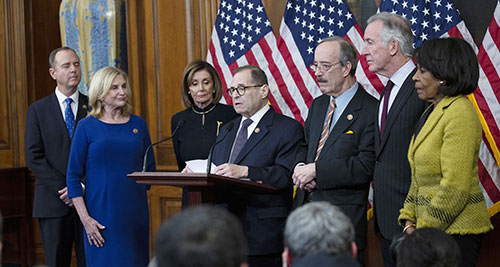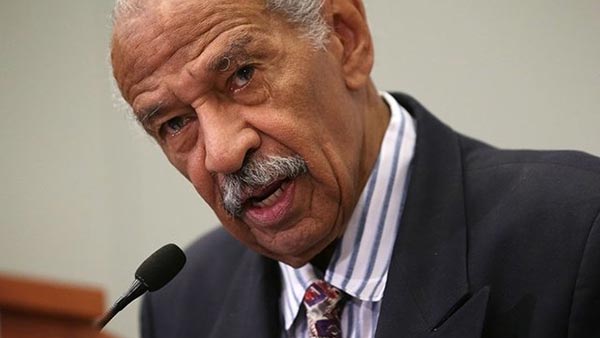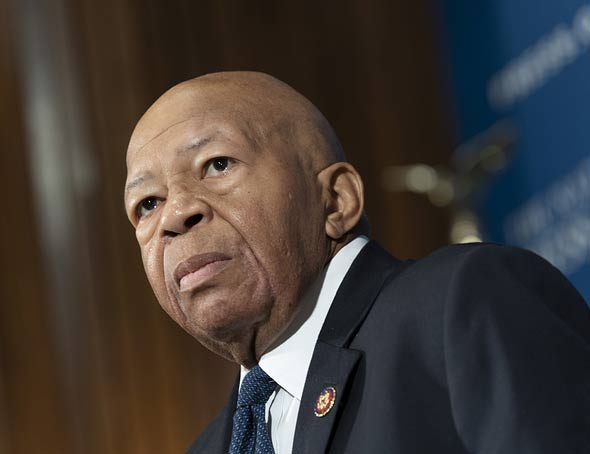Top Stories
Proposed Congressional Lines Generate Swift Responses
This week Honorable Roanne L. Mann, United States Magistrate Judge Eastern District of New York, released her draft redistricting plan for NYS. Judge Mann was appointed by the federal three judge court, led by federal appellate Judge Raggi, to undertake the enormous task of drawing long awaited and delayed congressional lines. Judge Mann hired Dr. Nathan Persily of Columbia University, an expert on redistricting, to assist her.
In response to Judge Mann’s draft redistricting plan, Dr. Esmeralda Simmons, part of the team intervening in Favors v. Cuomo, submitted a letter to Her Honor which generally approves of the Proposed Plan’s districts for NYC, except for the minor but serious objections and recommendations.
Simmons’ Specific recommendations are:
“CD 5 (Queens): Ozone Park and Howard Beach should be completely included in CB5 and removed from CD8. The residents of both of these Queens area’s form communities of interest regarding, inter alia, their proximity to JFK airport. They should not be joined with East New York area of Brooklyn.
CD8 (Brooklyn and Queens): We strongly recommend removing the Queens areas of Howard Beach and Ozone Park, and following the Unity Plan in Southeast Brooklyn. We additionally recommend returning to CD8 the closely-related areas of Fort Greene, Clinton Hill along with Downtown Brooklyn, Brooklyn Heights and Williamsburg. These adjoining neighborhoods are the transportation and commercial gateways to the central areas of Brooklyn that the remainder of the court’s CD8 covers.
This is a traditional Voting Rights Act (VRA) district (formerly 11CD) that was created for Black voters. It has covered parts of East and North Brooklyn that are heavily populated by Blacks: Bedford-Stuyvesant, Fort Greene, Ocean Hill, East New York, and Starret City, as well as the neighboring areas on the north of Brooklyn Heights, Williamsburg, and Highland Park.
Howard Beach and Gerritsen Beach areas are not communities that have common interests with the majority of residents in the 8CD.
Adding Ozone Park to this district forces the neighborhoods of downtown Brooklyn, Clinton Hill, and Fort Greene to be jettisoned and put in District 9. The boundary nine between 7 and 8 along Broadway could be straightened out to coincide with Broadway (like before). The boundary between 8 and 9 could be straightened out along Flatland Avenue.
CD9 (Brooklyn): this district should honor the east – west orientation of North Brooklyn and the Southeast orientation of the Black communities in Central Brooklyn below Atlantic Avenue. The Brownsville and Flatlands areas should be returned to the CD9 district. The Cobble Hill and Fort Greene areas should be removed to CD8. The boundary between CD8 and CD9 could be straightened out along Flatlands Avenue.
This is the original VRA District (formerly CD11) that was created for Black voters in Brooklyn and first elected Shirley Chisholm to Congress. It has traditionally covered parts of Central Brooklyn that are heavily populated by Blacks: Flatbush, Crown Heights, Prospect Heights, Brownsville, East Flatbush, Prospect Lefferts Gardens, along with Wingate, and parts of Park Slope.
CD16 (Bronx/Westchester): Rye, Scarsdale, and Eastchester should be removed. And the Mount Pleasant areas should be added.”
Assemblyman Karim Camara in his capacity as chair of the New York State Black, Puerto Rican, Hispanic & Asian Caucus, wrote to Judge Mann “strongly” objecting to the Brooklyn congressional maps recently released by the court “and the splitting of traditional African-American and Caribbean-American communities of interest throughout the borough.” According to Camara, “core communities that have traditionally been part of the 10th and 11th districts – both protected under the Federal Voting Rights Act – have been decimated without any reasonable explanation.”
Camara’s position on the new NY-9, a version of a current district where Caribbean-Americans hold a strong plurality, is that “these maps extend that district north to include the traditionally African-American neighborhoods of Fort Greene and Clinton Hill. Meanwhile, in the new NY-8, heavily white neighborhoods of Gerritsen Beach, Gravesend, Mill Basin and Georgetown in Brooklyn, and Ozone Park, Howard Beach and Woodhaven in Queens, are all added for the first time.” Camara stated, “These neighborhoods have nothing in common – racially, culturally, geographically, ideologically or socioeconomically – with the African-American neighborhoods of central and east Brooklyn and it would be a grave mistake to include them.”
The new NY-8 map also removes the homes of Rep. Edolphus Towns and Assemblyman Hakeem Jeffries. Camara pointed out that both “are declared candidates for the 10th Congressional district, have raised hundreds of thousands of dollars, respectively and have been presenting their candidacies throughout the district during the last several months.” Camara see this as an affront, stating that “the plan proposed by the court will short-circuit a democratic contest that is already underway, possibly depriving hundreds of thousands of African-American and Latino voters the opportunity to support the candidate of their choice.” Adding to the problems the proposed lines present, Camara stated, “Given the accelerated primary schedule with the date being moved up from September to June, dramatically changing the neighborhoods within these two Voting Rights Act districts at the eleventh hour will heighten confusion, reduce electoral participation and promote voter disenfranchisement.”
Camara saw the “well-intentioned” effort to add Coney Island to NY-8, but pointed out that Coney Island has never been a part of a Voting Rights district. Adding Coney Island in the new NY-8 requires the addition of the above mentioned neighborhoods of Gerritsen Beach, Gravesend, Mill Basin, Georgetown, Ozone Park, Howard Beach and Woodhaven.
“The issues presented by these radically redrawn maps can be resolved,” said Camara. “Instead of jettisoning the traditionally African-American communities of Fort Greene, Clinton Hill and parts of Prospect Heights that have long been within the 10th Congressional District, Coney Island would more clearly benefit from inclusion in the new NY-9.” Explaining his recommendations firther, Camara stated, “In a new iteration, NY-9 could move south from the neighborhoods of Flatbush and Midwood, adding Gravesend and Coney Island. Eastern Parkway could then serve as NY-9’s northern border. At the same time, the new NY-8 could move west, to take back in Fort Greene, Clinton Hill, Prospect Heights and southern Williamsburg, communities that were inexplicably removed simply to accommodate the addition of Coney Island.”
Camara shares Dr. Simmons view regarding Fort Greene, Clinton Hill and parts of Prospect Heights, areas which Camara said “have traditionally shared the same congressional district and are a community of interest, sharing bus and subway lines, commercial corridors, public schools and police and fire precincts.” Camara believes, “These communities have resided in the 10th Congressional district for the last thirty years and should remain as such.”
Assemblyman Hakeem Jeffries also responded to Judge Mann’s draft congressional lines, “strongly object(ing)” to the placement of Fort Greene and Clinton Hill into two separate congressional districts. “Historically, the traditionally African-American neighborhoods of Fort Greene and Clinton Hill have been linked together as one “community of interest” within the 10th congressional district. They are served by the same community board, the same police precinct, the same school district, the same bus and subway lines, the same firehouses, and the same central commercial corridors on Fulton Street and Myrtle Avenue,” said Jeffries, and is “closely connected to the predominantly African-American community of Bedford-Stuyvesant that is immediately adjacent to the east. These three neighborhoods are all linked by the same commercial corridor along Fulton Street and the same mass transportation along the A, C and G lines. School District 13 also includes the neighborhoods of Fort Greene, Clinton Hill, Prospect Heights and parts of Bedford-Stuyvesant.”
Jeffries stated, “It is unclear why the proposed congressional map for the new NY-8 jettisons Fort Greene and Clinton Hill (as well as parts of Prospect Heights) and replaces them with neighborhoods in the far reaches of Brooklyn and Queens, including Gerritsen Beach, Gravesend, Georgetown, Ozone Park Woodhaven and Howard Beach” since they have been within the same congressional district for three decades. “This mismatched marriage does not appear to serve the best interests of any of the residents involved,” said Jeffries.
According to Judge Mann’s proposed lines, only one congressional district now resides entirely within Kings County, notwithstanding the fact that at 2.5 million residents Brooklyn is the largest county in New York State. “Indeed, we can accommodate three entire congressional districts wholly within the borders of the county,” said Jeffries. “In this context, there is no plausible reason why the new NY-8 reaches into Queens to pick up three additional neighborhoods that have nothing in common demographically with the communities that have traditionally made up the 10th congressional district.”
A coalition called the Concerned Citizens of Fort Greene-Clinton Hill expressed its position on separating the neighborhoods and stated, “Consistent with the principles of the Voting Rights Act, the neighborhoods of Fort Greene and Clinton Hill should be kept whole and remain entirely within the 10th congressional district.”
Concerned Citizens of Fort Greene-Clinton Hill expressed alarm that “these same maps also remove Fort Greene’s largest public housing project – the Farragut Houses, again largely African-American – from the 10th Congressional district. As a result, residents of Farragut are cast off into the adjacent district to the north, thereby further diluting the African-American presence in the 10th Congressional district, separating the Farragut Houses from their traditional community of interest.”
Long-time residents and homeowners, Concerned Citizens of Fort Greene-Clinton have lived through challenging times during the crack epidemic of the 80’s when Myrtle Avenue was known as ‘Murder Avenue.’ “We have built a wonderfully diverse community through hard work, perseverance and political cohesion,” said the group. “ We need to make sure that the integrity of this district is maintained by keeping the Clinton Hill and Fort Greene communities of interest together. As a district that falls within the Voting Rights Act, and one that has consistently adhered to the “one district, one vote” rule, to break our community up defies the spirit of the law and a fair redistricting process. It requires immediate redress.”
Members of Concerned Citizens of Fort Greene-Clinton Hill include Councilmember Letitia James, District 35, Reverend Clinton M. Miller, Pastor, Brown Memorial Baptist Church, Reverend Linda Bell, St. Lukes Church, Ed Brown, President, Ingersoll Houses, David Goldsmith, 2nd Vice President CEC 13 and District 13 Parent, Delia Hunley-Adossa, President, 88th Precinct Council, Annie Stevenson-King, AARP Legislative District Advocacy Coordinator, and other concerned community residents.









